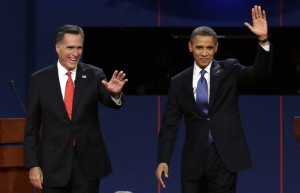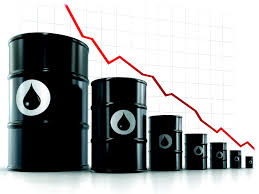ADRIAN, Texas — You have to squint your eyes a bit to take in the view in this picture.
It’s along Interstate 40 in the Texas Panhandle. I shot the picture this afternoon with my fancy-shmancy phone camera as I was returning home from a lunch meeting with a colleague in Tucumcari, N.M.
It’s a wind farm. Lots and lots and lots of wind turbines are blowing in the breeze, generating electricity — I reckon — to be shipped to points hither and yon. Given that I don’t get out as much as I used to, I was struck by the sight of hundreds of those turbines along nearly the entire length of I-40 through Oldham County after driving back onto the Caprock.
I want to call attention to this form of energy because of the presidential campaign that’s now in full swing in both major political parties.
Republicans and Democrats are seeking to nominate candidates for the White House, one of whom will succeed President Obama on Jan. 20, 2017.
That silence you’ve heard along the campaign trail has dealt with wind energy. You remember wind energy, don’t you?
Politicians are supposed to talk about it as a way to wean this nation from its dependence on fossil fuels. We’ve made some progress in one critical area: The United States is about to become the world’s leading fossil fuel energy producer, which means we’ve all but ended our dependence on foreign oil.
Of late, the only mention I’ve heard of energy production has been on the Democratic side of the campaign trail, with Bernie Sanders accusing Hillary Rodham Clinton of being in the hip pocket of fossil fuel producers; Clinton has fired back, saying Sanders also is beholden to campaign contributors who are associated with fossil fuel producers. The world has a glut of oil, demand is down, therefore so is the price of fossil fuel-related products — such as gasoline!
Oh sure, the candidates traipsed through Iowa corn fields in the first contest of the season and talked here and there about ethanol, the “bio-fuel” produced by corn. One of the big surprises of the campaign, of course, was Texas U.S. Sen. Ted Cruz’s victory in Iowa — even though he stuck his neck out and criticized ethanol subsidies as a form of government giveaway the nation couldn’t afford.
The Republican/Democratic Road Show trekked eventually to Texas. Did you hear much around the Panhandle about how any of the candidates would seek to shore up wind power?
If you did, then were dialed in far more acutely than I was. I don’t recall hearing a peep out of that still-large herd of candidates in the time leading up to the March 1 Texas primaries.
I’m proud of my state for becoming a leader in wind energy. Think of it: Texas and California have something in common after all, as they are the two leading wind-producing states in the country. Who knew?
Heaven knows we have enough of it here. It’s renewable and clean — even when it kicks up tons of dirt from the cultivated fields that are spread out for miles upon miles along our vast horizon.
Here’s my plea to the candidates … if they or their staffers see this blog post: How about talking more about wind and other renewables? It’s no longer cool to just “drill baby, drill.” We’ve got a lot of wind out there that’s not coming from the mouths of political blowhards.
How about ensuring we find ways to put it to use?


